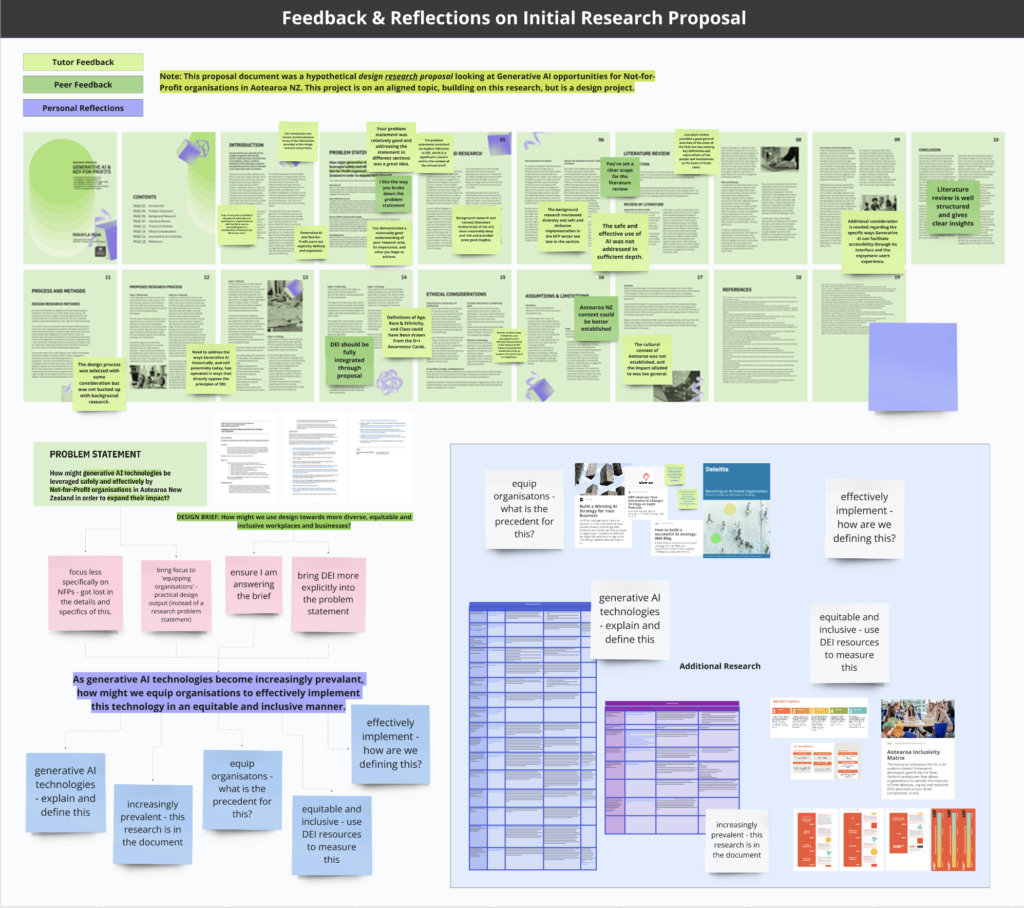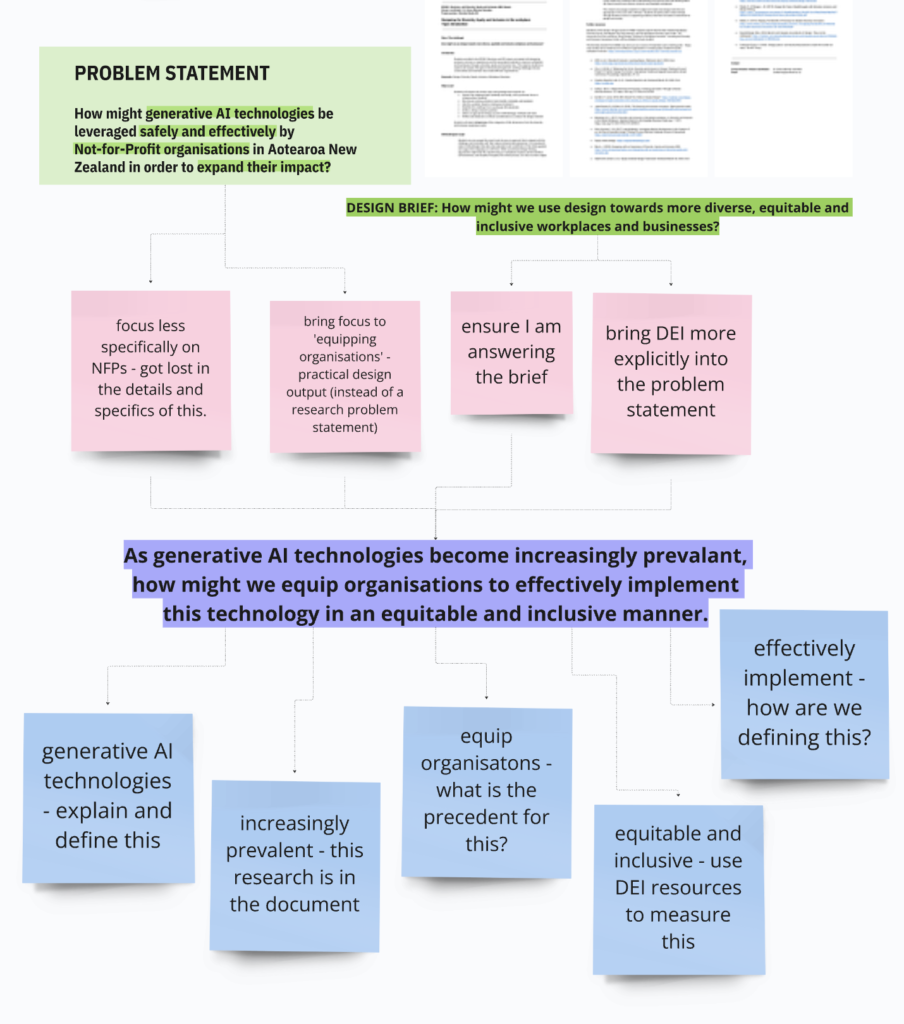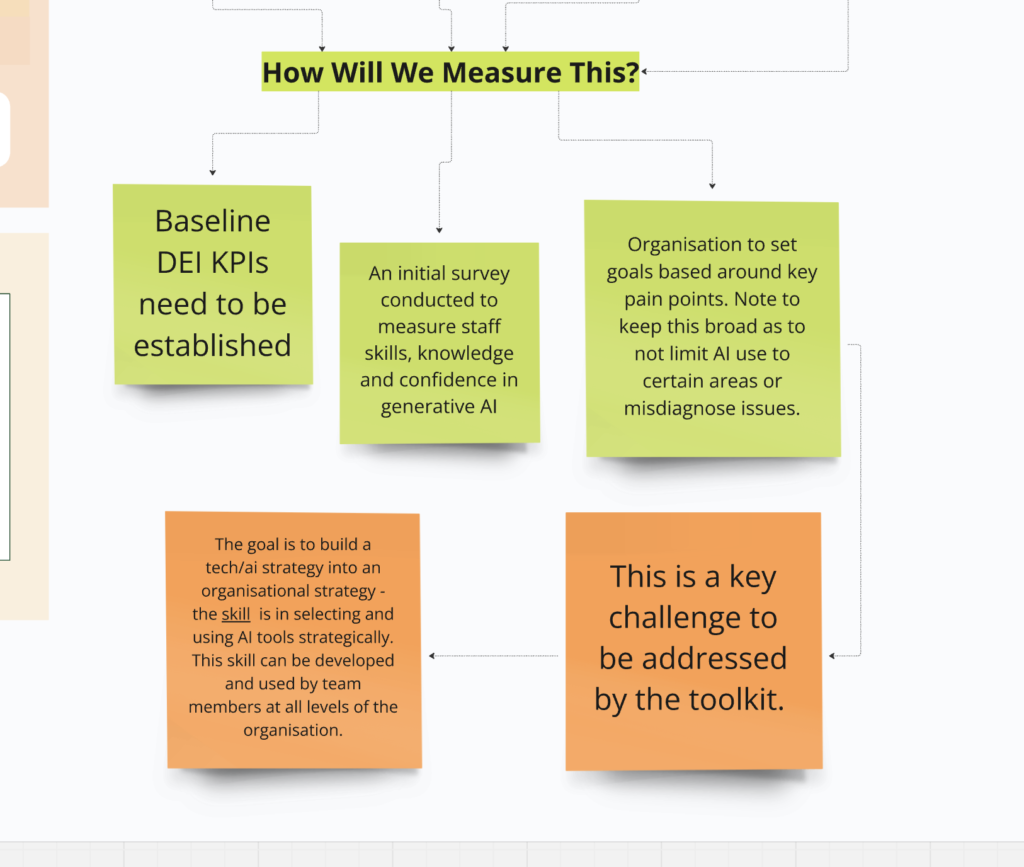Mikayla Peak
BLOG 01
Wednesday 24th July
Context
I have reviewed my initial research proposal and incorporated the feedback received. This crucial step led to refining my “how might we” statement to better align with the project’s brief and objectives.

I loaded my original research proposal into my Miro board and broke down the feedback provided by my marker into bullet points to add to the relevant sections. This visual way of adding in feedback helped me in to see where I needed to make changes and rework my proposal. I also added in my own personal reflections, and some points provided by a classmate who I asked to review my work.

This process allowed me to rework my problem statement to the following:
“As generative AI technologies become increasingly prevalent, how might we equip organisations to effectively implement this technology in an equitable and inclusive manner”.
As seen in the above image of my Miro board, I have bullet pointed a few key considerations for comprehensively addressing this ‘How might we’ statement. Due to the broadness of this topic, clearly defining my limitations and criteria will be a crucial step for me to scope out my project in a reasonable manner.
Action
Following the above work I have worked to create a comprehensive project plan including a project charter that outlines what success would look like in this project, selected the triple diamond methodology for my project, and created a timeline in line with the expected deadlines.
My decision to outline a clear ‘project charter’ comes directly from the feedback I received on my research proposal. I want to ensure my goals for the project are clearly outlined so that I remain on track and aligned to the vision of the project. As part of this process I identified some key pain points and opportunities I am looking to address and mapped out a user journey of someone successfully interacting with my final output.
My decision to choose the triple diamond methodology for this project was also a direct result of my initial reflection work. Due to the fast paced nature of this project I wanted something similar to the Sprint Methodology that would allow me to rapidly iterate as I work through the project. However it was also important to me that I have some clearly established ‘Checkpoints’ that enable me to refocus in on my core goals I am aiming to achieve through this work.
Result
The above reflection and planning work has enabled me to jump into this project and rapidly begin working on my first iteration of the design. The project charter gives me confidence I can stay on track during the process and ensures I am aligned with the vision of the project.
This process has sparked a number of key inspirations that have jump-started my brainstorming process. One core realisation was around the importance of catering the toolkit I am designing to developing skills in the users, rather than simply implementing a piece of technology. This may seem simple but was a significant revelation that has given focus to my work.

Learning
Undertaking this process has emphasised to myself the importance of thorough reflection and planning when preparing for a significant project such as this. The insights gained from seeking and reflecting on the feedback provided to the initial project proposal has been invaluable in setting myself up for this project.
Additionally, utilising a structured methodology such as the triple diamond methodology has enhanced my ability to plan and undertake a complex project such as this effectively and to a high standard. My reflections on where I lost focus in my proposal taught me that I need to take a structured approach to projects that ensures I remain aligned with my core goals throughout the project.
Finally this process has caused me to reflect on my positionality as a designer in Aotearoa. I recognize the weight of the responsibility that comes with this project, and it’s potential shaping of the technological landscape of my community. I acknowledge my own positionality as a Pākehā woman, and that my design work is influenced by my own Whakapapa, context, biases, knowledge, and life experiences. I recognise that this project is undertaken in Aotearoa, where I have a responsibility as a Kaitiaki of the land and its people, and to upholding Te Tiriti o Waitangi.